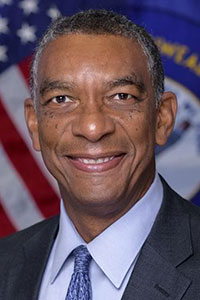
FRANKFORT, Ky. — Bachelor’s degrees awarded at Kentucky’s public universities increased 12 percent overall under a performance-based funding model directed by the 2016 General Assembly, state lawmakers were told Tuesday.
Council on Postsecondary Education officials told members of the Interim Joint Committee on Appropriations and Revenue that the new funding model—based on student success, course completion, maintenance, and institutional and academic support—is leading to outcomes like the 12 percent increase in bachelor’s degree production over base-level funding, or what CPE President Dr. Aaron Thompson called the “sector average.”
The change occurred over a four-year period, between academic years 2013-14 and 2017-18, said Thompson, with a substantial increase of 27 percent of more in the number of STEM+H (STEM degrees with a health component) and URM degrees (underrepresented minority) also recorded.
“If you’re at or above sector average, you will receive some of the funding,” said Thompson.
CPE Vice President of Finance and Administration Dr. Bill Payne says the new funding model is improving years of funding disparities between universities. Six state universities received $2,036 in state funding per bachelor’s degree awarded in fiscal year 2018-19, said Payne, with a seventh (Morehead State University) close to reaching the same performance funding level, or “equilibrium,” he said.
There is some concern, however, that universities could fall off what Thompson called a “fiscal cliff,” or a loss of more than two percent of a university’s funding base under the model. Concern has been specifically shown for Morehead State University and Kentucky State University—the eighth university in the funding model which, like Morehead State University, now receives more state funding per degree awarded than the other six schools.
Payne said “some level of new funding” from the General Assembly could help avert potential fiscal cliffs for Morehead State and KSU as early as 2021-2022, when budgetary protections are phased out. Declines in performance at any state university, he added, could potentially be damaging if budgetary protections aren’t in place.
“It’s not just KSU and Morehead that could potentially face those fiscal cliffs,” said Payne. “If a number of institutions perform well but there was one institution that had a decline in their performance, that institution … could lose more than two percent of their base funding as a result of not having a stop loss in place.”
Pension costs and enrollment levels at various universities also present challenges, said Payne.
Sen. Robin Webb, D-Grayson, asked the CPE to elaborate on the financial challenges facing Morehead State, her regional university. Payne said Morehead State is performing well and is close to reaching equilibrium. But Thompson said the university has had lags in enrollment and funding, posing future challenges. That drew a response from Webb.
“All of these universities have their own unique challenges and have had those since their existence,” said Webb. “The composition of the formula now may address some of those, may not … for that institution.” She said protecting the identity and mission of universities should also be considered.
“What I hope we don’t see is in the conforming mechanism … that they don’t lose their identity or that we’re somehow becoming generic performance producers,” said Webb.
Regarding new funding, Interim Joint Committee on Appropriations and Revenue Co-Chair Sen. Chris McDaniel, R-Taylor Mill, said the next budget session will be challenging. Medicaid expansion costs will take at least $75 million in the next budget cycle, he said, and more funding will be requested by the state retirement systems. That will be compounded by what he called “old debt” and little, if any, state budget surplus available, plus other costs.
“I would say most members are not going to be keen to provide new funding if folks don’t take control of their own destiny,” said McDaniel.
He mentioned pensions, and the fact that both the University of Kentucky and University of Louisville are utilizing retirement options through TIAA-CREF and/or other private companies, adding that other state universities could look at doing the same.
“If we don’t see some action from individual institutions to take control of their own destinies using tools that we’ve provided, asking for more money becomes a very, very difficult request,” said McDaniel.
Thompson said the universities are in the process of reducing their Kentucky Employees Retirement System (KERS) staff in “very respectful” ways, and the CPE plans to have more in-depth conversations about that.
Forty five percent of Kentuckians currently have a postsecondary degree or certificate, according to the CPE. The state’s “big goal,” according to the CPE, is for 60 percent of Kentucky’s working age adults to have a postsecondary degree or certificate by 2030.



















Add Comment